Last week, I saw a huge amount of messages like “my internet browser presents me undesirable Reader.com pop-up advertisements, is it a pc virus?” or “these Reader.com pop-up advertisements in my Chrome making me mad, how to manage them?”. According to the stats for last months, virus suppliers began a wide adware delivery project. Let me show you, how you can get rid of the pc virus from your computer, and forget about the irritating Reader.com pop-ups.
Pop-Ups : Discovering The Nature
You can admit that some sites (like a Reader.com) use you pop-up promotions. The message can have something like “do you want to receive alerts regarding the latest information?” or “enable notifications to be reported regarding new discounts?”. Normally, such messages are trustworthy, and can only distract you with its sudden visual appeal. And it can be easily turned off, in case notifications from this site are no longer desired.
Pop-up notices are fairly an efficient advertising mechanism. If you are interested in goods of some type, you can enable pop-ups from the website where you can purchase this stuff, and also as soon as these things are in store again, or if you can have a price cut – you will get the notice about this. The counterparty – online stores, vehicle lending services, etc – will be in profit, too – customer will undoubtedly obtain a reminder concerning the item he/she planned to buy. And such an advertising approach is almost free of charge – this element is really crucial for corporations.
| Site | Reader.com |
| IP Address | 216.92.135.17 |
| Infection Type | Adware, Push notifications, Unwanted Ads, Pop-up Ads |
| Symptoms | Annoying pop-up ads in the right corner. |
| Similar behavior | Datadesktopsecurity.online, News-tarepi.cc, Zeleboba.click |
Reader.com Pop-Ups Are Not So Safe
But occasionally pop-up ads can show up without your permission, and with a material which is entirely various from your existing interests or search queries. And also, besides unwanted Reader.com pop-ups from the unknown source, you can at the same time see a great deal of promotions, consisting of ones on the web pages which primarily have no promotions at all. Such a scenario can be the sign of adware existence.
Adware is the type of pc virus which injects into your system, and then begins displaying you various advertisements. Their material often has no correlation with your ordinary search questions. Besides banner promotions, your browser can additionally suggest you a big number of various Reader.com pop-up promotions, which come into view in the bottom right corner.
The model of adware usage is extremely sly. The huge pack of adware is dispersed through trojan viruses, which are injected in your computer previously. Promotions, which are shown to you by malicious app, are paid by their makers. In a couple of weeks, all antivirus programs began to stop these adware, thus, trojan sheds in earnings. And to ruin the user’s desktop, malware distributors start ransomware distribution through these trojans.
Even if there is no active ransomware distribution, your computer can still be influenced by adware virus. A big quantity of promotions in addition to Reader.com pop-ups can make your PC as slow as snail, so your regular activities will be impossible to execute in common manner.
How Can I Deal With Reader.com Pop-Ups?
Assuming the paragraphs above: your personal computer, along with your data, is in a serious risk. To quit this infection, you require to use anti-virus tool. Microsoft Defender, which is embedded in every Windows 10 distribution, has the ability to handle Reader.com pop-ups virus. Nonetheless, it can’t return the browser changes which were applied by harmful program. Another drawback of the antivirus by Microsoft is its particular susceptability: viruses can disable Microsoft Defender with the Group Policies after being injected to your computer.
To be 100% sure that your computer is clean of any malicious programs now, and will be clean in future, I can offer you to use GridinSoft Anti-Malware.
To detect and remove all malicious applications on your personal computer, including Reader.com pop-ups virus, with GridinSoft Anti-Malware, it’s better to utilize Standard or Full scan. Quick Scan is not able to find all the malicious apps, because it scans only the most popular registry entries and directories.
You can see the detected malware sorted by their possible hazard till the scan process. But to choose any actions against malicious programs, you need to wait until the scan is over, or to stop the scan.

To choose the action for every detected virus or unwanted program, click the arrow in front of the name of detected malware. By default, all malware will be moved to quarantine.

Reset browser settings to original ones
To reset your browser settings, you are required to use the Reset Browser Settings option. This action is not able to be counteracted by Reader.com virus, hence, you will surely see the result. This action can be found in the Tools tab.

After choosing the Reset Browser Settings option, the menu will be shown, where you can specify, which settings will be reverted to original.

Reset browser setiings without using third-party software
Besides using antivirus programs for browser reset, you can choose the “Reset browser settings” option, which is usually embedded in all popular browsers.
Reset Microsoft Edge ⚙ Settings
- Open "Settings and more" tab in upper right corner, then find here "Settings" button. In the appeared menu, choose "Reset settings" option:
- After picking the Reset Settings option, you will see the following menu, stating about the settings which will be reverted to original:
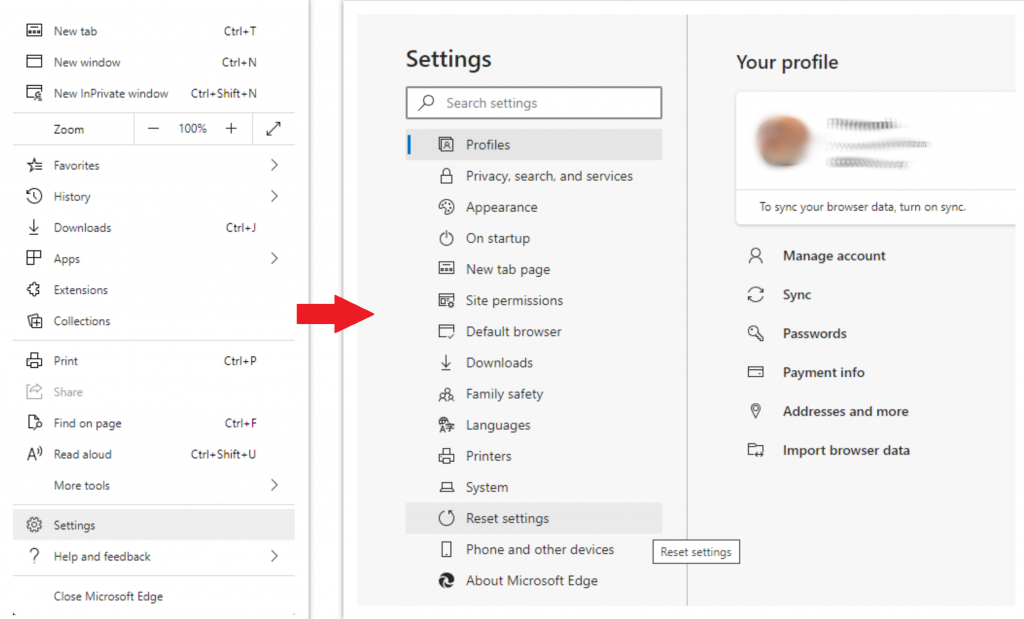
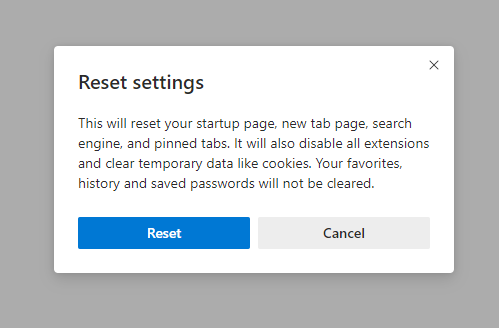
Reset Mozilla Firefox ⚙ Settings
- Open Menu tab (three strips in upper right corner) and click the "Help" button. In the appeared menu choose "troubleshooting information":
- In the next screen, find the "Refresh Firefox" option:
- Open Settings menu by pressing the gear icon in the toolbar (left side of the browser window), then click "Advanced" option, and choose "Browser" button in the drop-down list. Scroll down, to the bottom of the settings menu. Find there "Restore settings to their original defaults" option:
- After clicking the "Restore settings..." button, you will see the window, where all settings, which will be reset, are shown:
- Open Settings tab, find the "Advanced" button. In the extended tab choose the "Reset and clean up" button:
- In the appeared list, click on the "Restore settings to their original defaults":
- Finally, you will see the window, where you can see all the settings which will be reset to default:
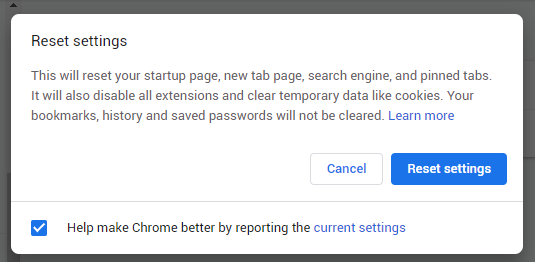
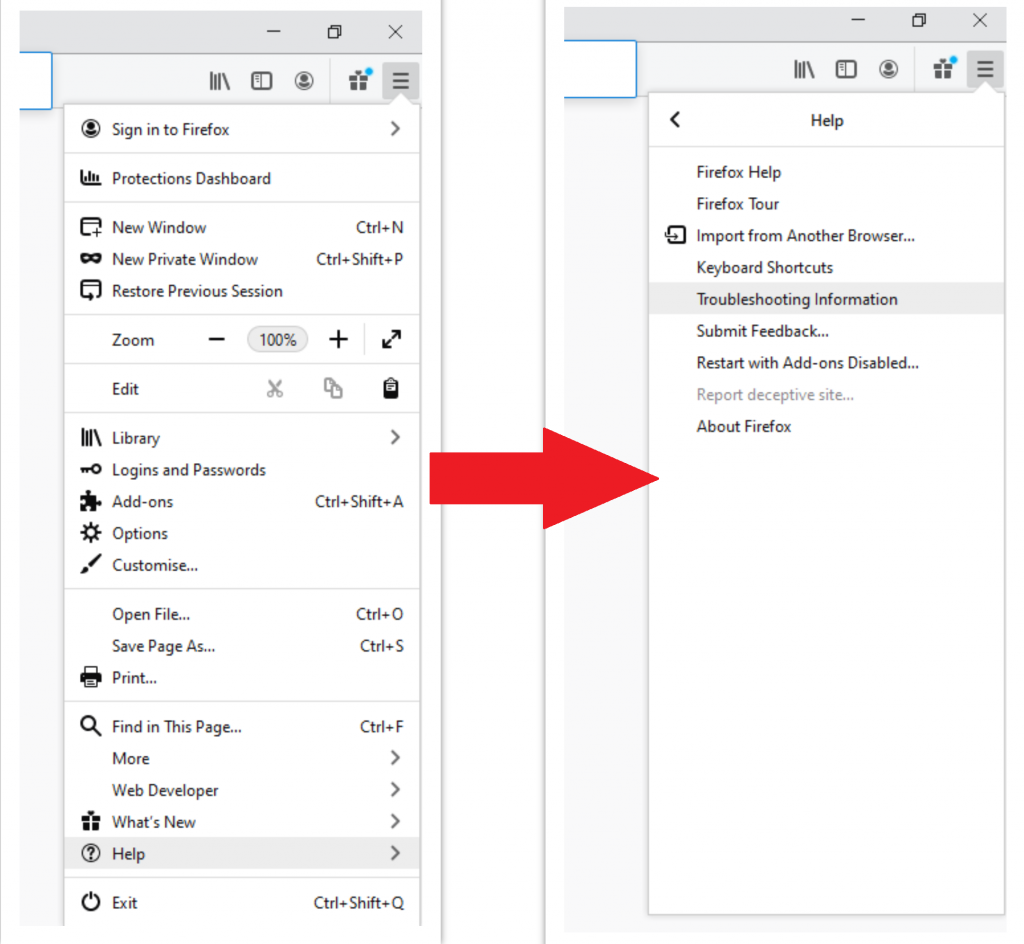
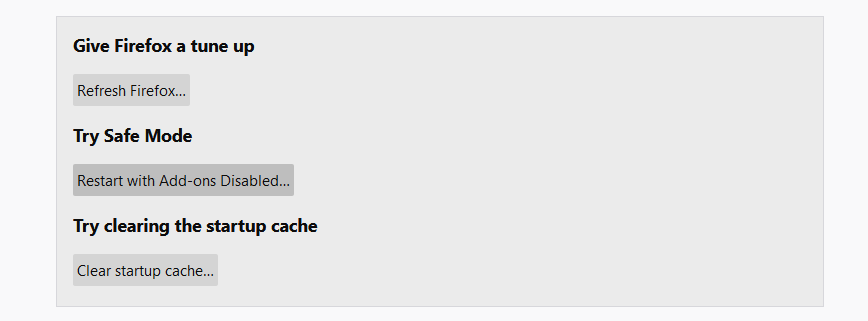 After choosing this option, you will see the next message:
After choosing this option, you will see the next message:

Reset Opera ⚙ Settings


Reset Google Chrome ⚙ Settings
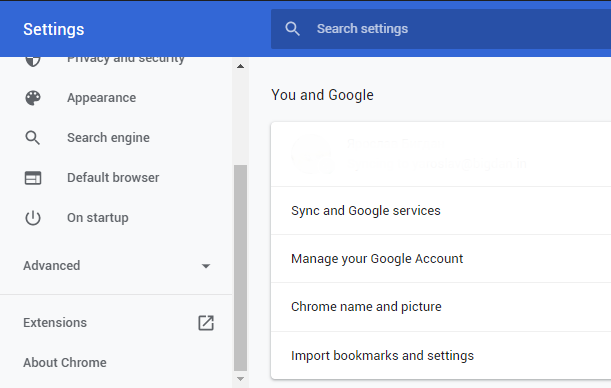
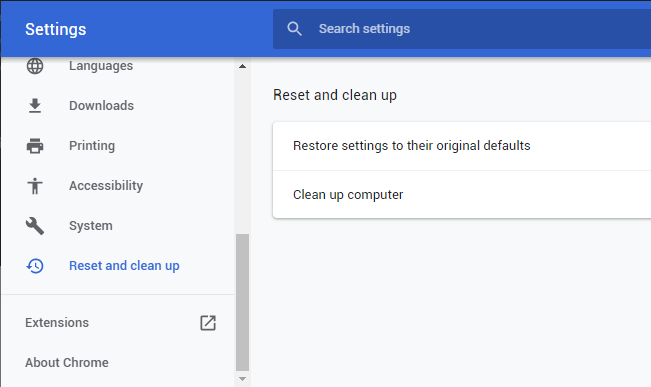
As an afterword, I want to say that the time plays against you and your PC. The activity of browser hijacker Reader.com must be stopped as soon as possible, because of possibility of other malware injection. This malware can be downloaded autonomously, or offered for you to download in one of the windows with advertisements, which are shown to you by the hijacker. You need to act as fast as you can.











